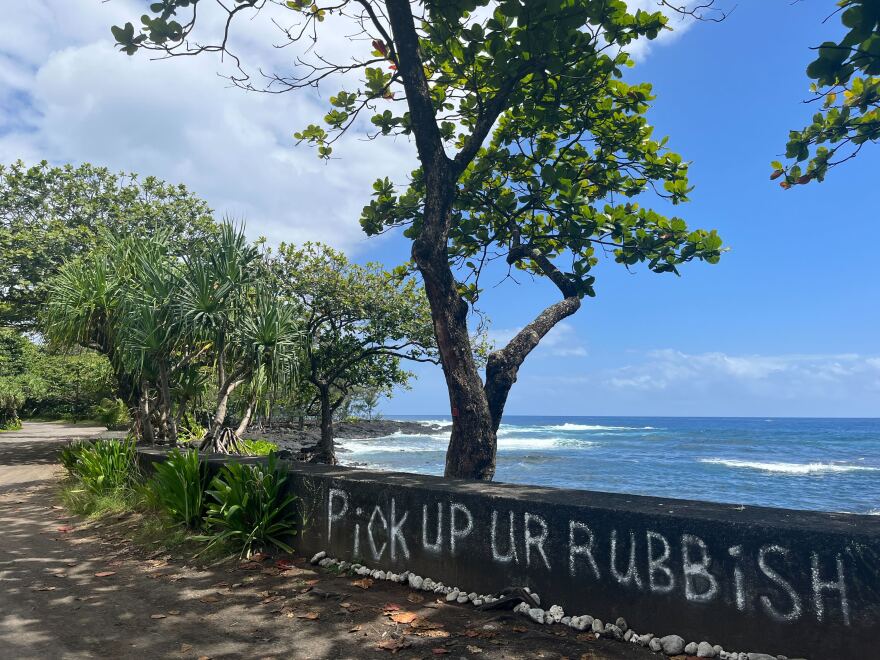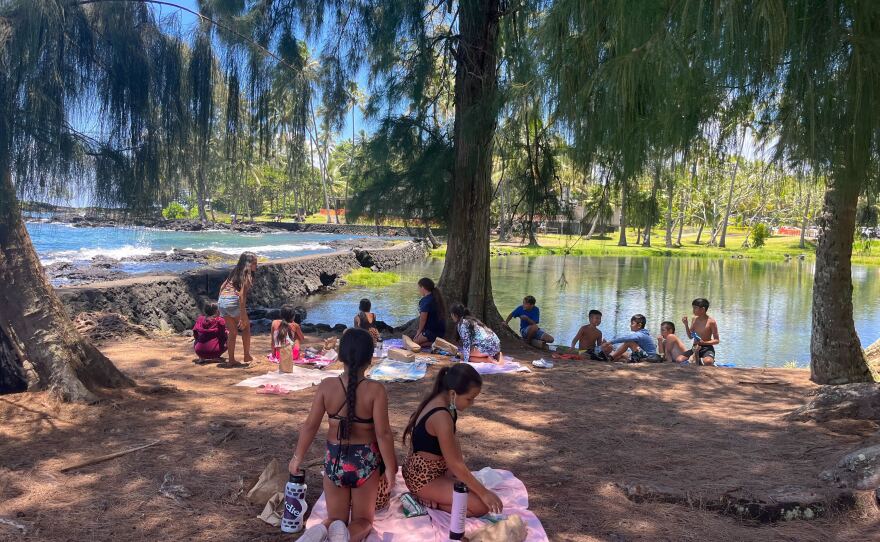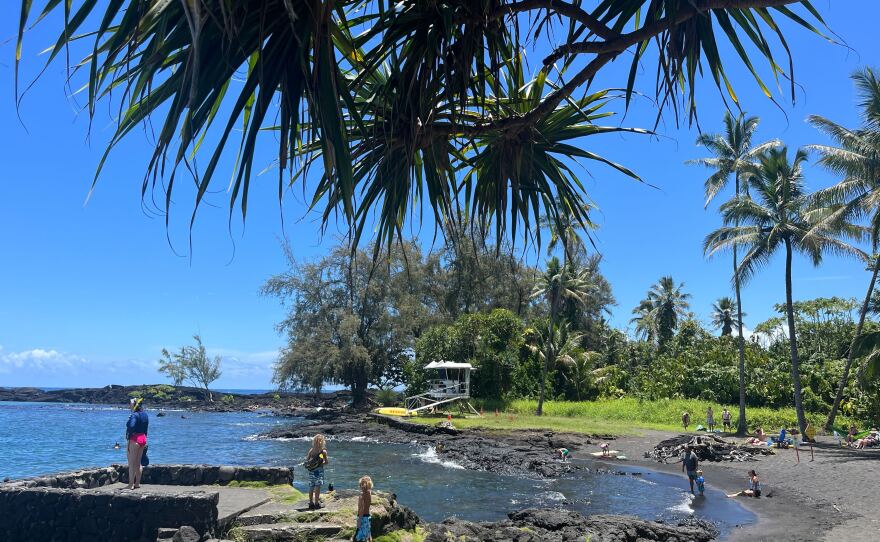The coastal community of Keaukaha on Hawaiʻi Island has been flagged as a tourist "hotspot" by the Hawaiʻi Tourism Authority. Residents there say they have been feeling the pressure for years.
A new pilot program aims to empower the Keaukaha community to manage the impacts of tourism themselves.

Lehia native ʻĀinaaloha Ioane’s family has been coming to Waiuli Beach Park for generations.
"So kēia, this loko iʻa is Honokea. The ocean is Waiuli, our lae over there is Puakahinano. Then after Puakahinano, we hit Lehia," Ioane said.
Ioane is the project coordinator for the Keliʻi William Ioane Legacy Foundation. The organization is the community lead for the Keaukaha Stewardship Program.
"The intent of the stewardship program right now is to first identify what’s happening. And once we can understand what’s happening then we can have discussions with our community about, 'Okay, how do we feel about what we see is happening?'” Ioane said.
Impacts from tourism could mean tour buses blocking public walkways, bathrooms running out of toilet paper, or tourists getting hurt traversing the rugged lava rock coastline.
For Keaukaha resident Sue Champany, the impacts of tourism are heightened on cruise ship days. She recalls the first day the cruise ships returned following the COVID-19 lockdown.
"I was here, I saw it. And the whole neighborhood was like 'What the heck is going on?' We started counting. 600 tourists later in less than six hours, we knew we had a big problem on our hands. That’s a lot of people in a five-acre park," she said.
Ioane said that's just one reason why they created the stewardship program. "The goal is that we create a mechanism for the community to constantly input and have a say on what’s happening in our wahi."
Last year, more than nine million tourists visited Hawaiʻi. Ilihia Gionson, the Public Affairs Officer for HTA, said when they talk about tourism, they're not talking about managing nine million visitors. It's about managing the nine visitors.
"ʻAʻole pili kēlā nui o ka ʻeiwa miliona, pili i ka ʻeiwa. [FADE] Pili i nā malihini ʻeiwa i ʻike ʻole i ke ʻano e mālama ʻia ka honu, pili i nā malihini ʻeiwa i ʻike ʻole i kahi kūpono e hoʻokū ai ke kaʻa, pili i nā ʻeiwa i lele i ka pā ʻuea a komo ma kahi kūpono ʻole."
Gionson said they're talking about the nine tourists who don’t know how to properly observe the sea turtles, the nine tourists who don’t know where to park, the nine tourists who go past the gate and enter land they aren’t supposed to. Every community has a different approach.









